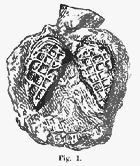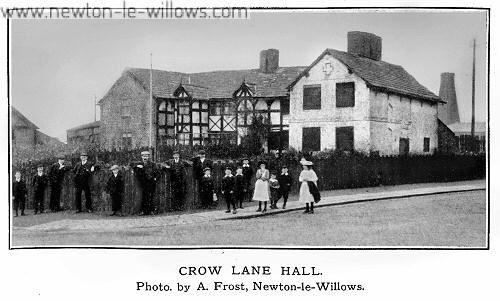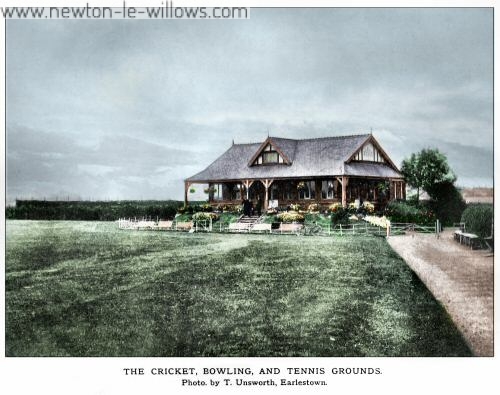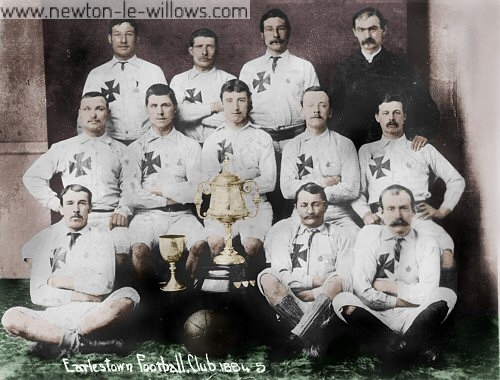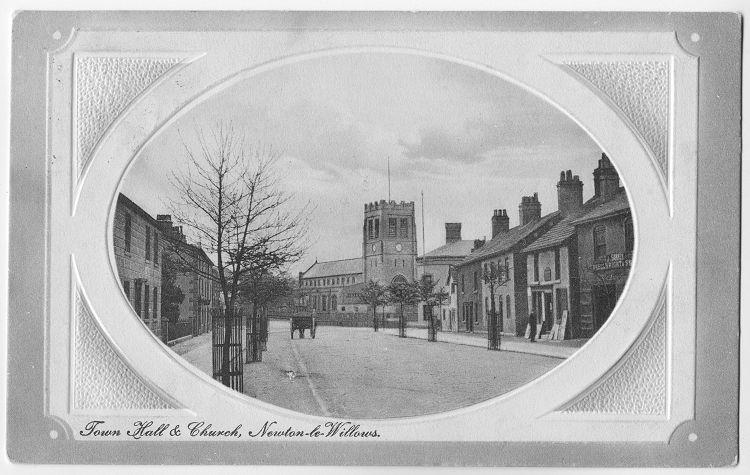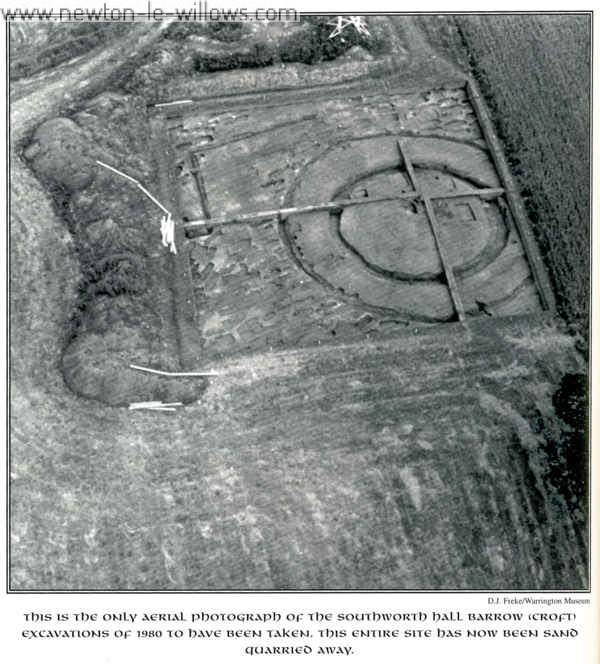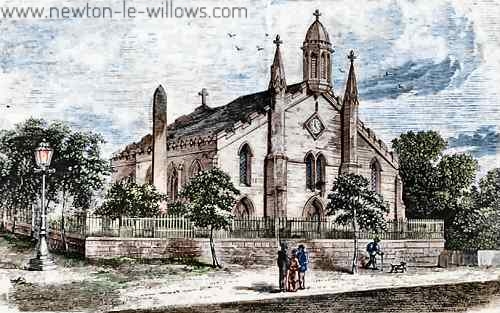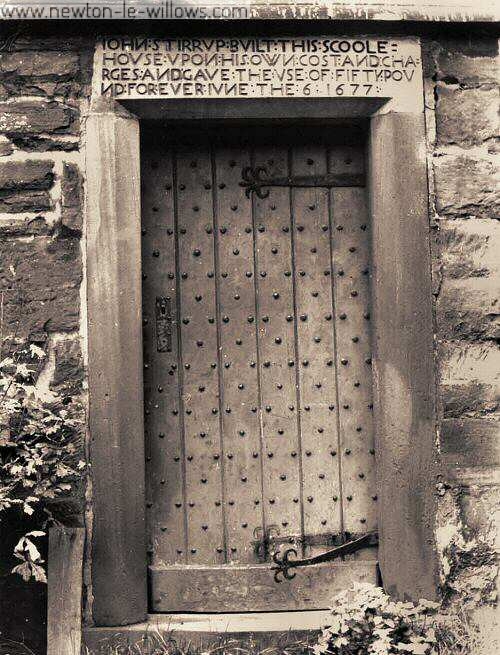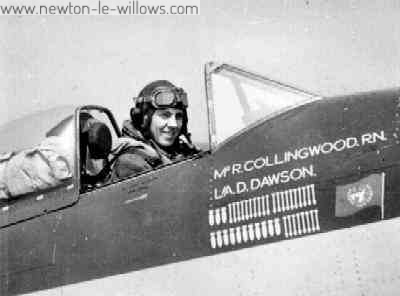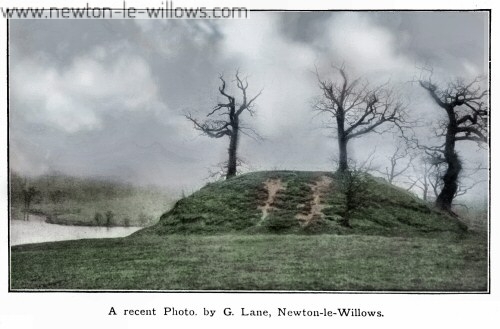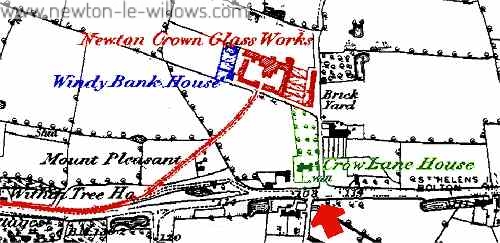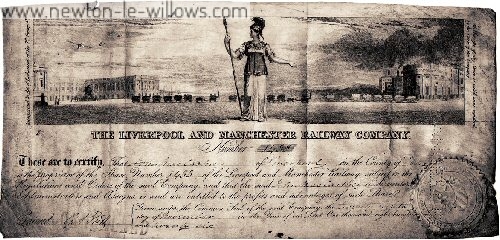Historical and antiquarian notes on Warrington and its Neighbourhood By John Babson, Esq. The object of the present communication will be to combine as well as I can the evidence from historical records, local traditions, and existing remains, so that each may throw light upon the other, and afford something like a continuous history of the district you have passed through this afternoon. The earliest remains we have to notice are the Tumuli, of which we have two marked on the Ordnance Map, to the east, and a little to…
Read More >>Category: Local History
The Barons of Newton
Devices and Armorial Bearings of the Barons of Newton and their Kindred. This is a fragment of the seal of Warin Banastre, son of Robert Banastre, and heir to his brother Richard, who died 23rd April, 1205. This seal was appended to a grant in ” Waletona,” to one Alured, and is amongst the muniments of the Leghs of Lyme, which have supplied most of the seals here engraved. fig. 1 The deed to which this seal is appended being without date, it is uncertain whether it was used by…
Read More >>Crow Lane Hall & Newton Serjeants
This building, probably the oldest in the township, was formerly a moated grange, vestiges of the moat being visible in the boyhood days of some of our septuagenarian residents. It is said to have been the abode of the serjeant (or bailiff) of the lord of the manor, a post of great importance in olden days, and corresponding to that of sheriff of more recent times. Its very probable that the Serjeants (or Sergeants as the name later became), who resided at Crow Lane Hall in the 15th, 16th, and…
Read More >>Everton V Earlestown
Here are a few more facts about Earlestown FC 1899-00 Joined Lancashire League 1903 Lancashire League closed down 1903-04 Joined Lancashire Combination as founder members of new Division 2 Lancashire Combination Division Two runner-up Promoted to Division One 1906 Relegated to Division Two 1906-07 Lancashire Combination Division Two runner-up Promoted to Division One SEASON LEAGUE P W D L F A P POS 1899-00 LANCS 28 7 5 16 40 64 19 11/15 1900-01 LANCS 20 8 3 9 31 45 19 8/11 1901-02 LANCS 24 12 5 7 54…
Read More >>Newton Cricket, Bowling, and Tennis Club
On the April 13th, 1858, a meeting was held in the Assembly-room, High-street, Newton-le-Willows, for the formation of a cricket club, W. Mercer, Esq., in the chair. A sum of upwards of £50 was announced as subscribed in the room. Officers were there-upon appointed, with W. J. Leah, Esq., as patron ; W. Mercer, Esq., president; Dr. J. W. Watkins, secretary ; and George McCorquodale, Esq., treasurer. On May 30th following the opening game was played. The ground was in excellent condition, and there was a good attendance of members.…
Read More >>Some Earlestown Sporting History
My father, a supporter in the 1880s often spoke to me about the team in those early days. The playing field was at the back of the Swan Hotel, on Newton Common. He was present on this ground when the famous Preston North End Invincibles played Earlestown and beat the local team 19-0. I understand the record score for the Noah End was beating Hyde 26-0.! Earlestown also played Everton in the 1880s can you imagine it? A team from Earlestown playing against Everton in a cup final. Well, that…
Read More >>Newton & Earlestown in 1895
I do not guarantee that my transcription doesn’t include some pretty basic mistakes, apart from my poor typing ability and bad spelling, some pages were very marked making them hard to read. I hope this transcribed text will be well received, its easily searched with the find on page facility included with most any web browsers from the browsers edit menu. There are two sections to this article, Newton-le-Willows is the top one, and Earlestown is the lower one, Hope you find them useful. NEWTON-LE-WILLOWS (SEE ALSO EARLESTOWN), INCLUDING ASHTON-IN-MAKERFIELD…
Read More >>Earlestown & Newton in 1890
And now let us take a walk round Earlestown and Newton and see what it was like about 1890. Immediately to the left of Earlestown Station was a large open space where the shops now stand and which was a common playground for the youth of the neighbourhood. That side of the street has changed very little, except that the shops at the top have all been altered and had new fronts put in to meet changed conditions. On the other side, starting at the bottom, there was Mr. Attfields…
Read More >>Southworth Burial Mound
Southworth Burial Mound Take Myddleton Lane (the ‘Eastern avenue’ off the Winwick mound) out of Winwick towards Culcheth and it will lead down the ley line towards Croft where it becomes Southworth Lane as it passes the ancient Southworth Hall over the M6 motorway. In the fields to the right Victorian Historical Journals from the Warrington Historical Society mention there may have been the burial mounds though these are now lost being ploughed flat, and in the field to the left on the Newton side, between the motorway and Southworth…
Read More >>St Peters Church
Below are a few images that show some of the many changes made to St Peters over the years. St Peters Church (approx 1835) This picture of St Peters is from about the year 1835 and clearly shows the Church without its bell tower, also visible in this image, standing to the left side of the church is the obelisk which was later removed to the centre of Earlestown Market, where it still stands. St Peters Church (approx 1910) In this lower of the two images you can clearly see…
Read More >>Dean School, Newton-le-Willows
Details relating to its early history and later domestic use were discovered during the course of this research. Information about its builder and later residents will also be considered, along with some details about the Dean School Trust set up by the original builder of the property. THE FOUNDATION OF THE SCHOOL Dean School, or Dene School, was founded in 1677 by John Stirrup.(1) The building was erected on a piece of barren land.(2) The date of construction is cited on an inscription that was over the front entrance to…
Read More >>AirCrash – Supermarine Attacker – 05/02/1953
Supermarine Attacker FB.1 WA535 – 05/02/1953 On Thursday 5 th February 1953 Mr Roy Edwin Collingwood (all commissioned Pilots were known as Mr) took off from Royal Naval Air Station Stretton ? ?HMS Blackcap? near Warrington in Supermarine Attacker FB.1, No WA535 on what was to be his 3 rd ?Famil? (Familiarisation) flight at 15:30 hours. At 15:32 hours he was given ?Go? on Channel Baker, and at 15:37 hours he was called up by Mr Lines, who was then flying a Meteor aircraft. In the course of a short…
Read More >>Castle Hill by the Rev. Edmund Sibson
The following account was written in 1843 by the Rev. Edmund Sibson, once Curate at Winwick, and after- wards Vicar of St. Thomass, Ashton-in-Makerfield, and is entitled “An Account of the Opening of an Ancient Barrow called Castle Hill, near Newton-in-Makerfield, in the County of Lancaster” This Photo of Castle Hill is from the 1916, Vol II, History of Newton in Makerfield, by J H Lane. edited and coloured from the original by Steven Dowd Mr Bainess Description. “At the distance of half a mile from and to the N.…
Read More >>Newton Glass Works
This Shows the location of the Glass Works In relation to Crow Lane, The Glass works (red) stands on the site where we know have the Fire Station, Opposite is the Brick Works, Windy Bank House (blue) is still standing, but all of the Glass Works or its Railway line are both long gone. This as far as I can tell is the only image that exists that shows anything of the Glass Works, you can see to the right of this image, in the distance the bottle shaped kilns…
Read More >>The Liverpool & Manchester Railway
The Cotton Trade In the latter part of the eighteenth century, the area surrounding the port of Liverpool and the growing town of Manchester was rapidly expanding. The American colonies had played a large part in promoting Liverpool as the port of import, and Manchester as the finishing centre for their cotton. Liverpool also dealt with the importation of rum, tobacco and slaves as well as establishing itself as the chief trading port with Ireland ? importing yarn which was then sent to Manchester. As an example of the enormous…
Read More >>
